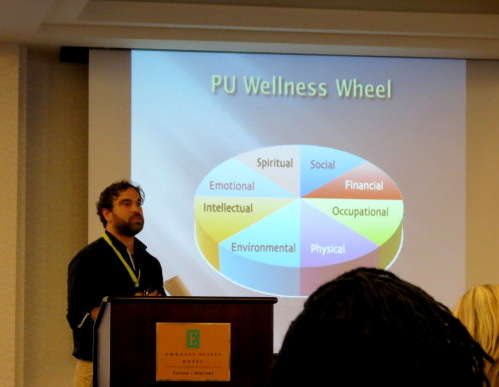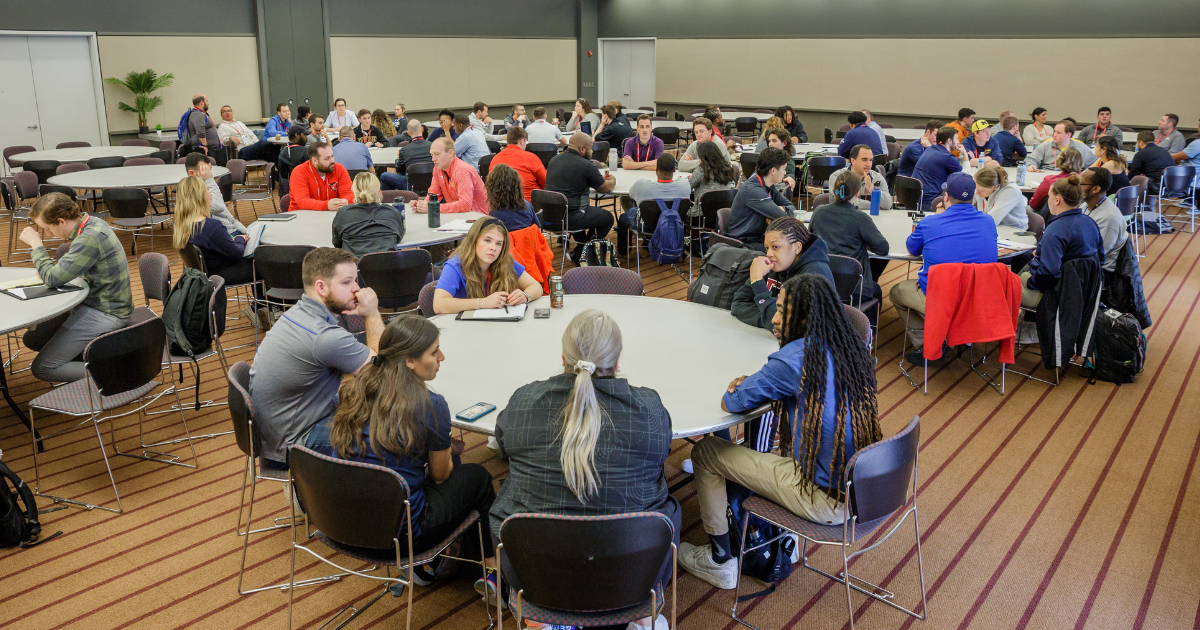By Jackie Luskey
What role do you play in your recreation department?
Level I of The National School of Recreational Sports Management, referred to as “The School,” whole-heartedly dives into this question.
From June 2-6 in Portland, Oregon, the school’s attendees explore how it takes all sorts of leaders to create one harmonious team, with every player proving their own unique composition of strengths and leadership skills.

The School culminated in powerful case study presentations.
The School utilizes the DiSC profile model, which is a personal assessment resource that helps individuals identify and improve methods of productivity, teamwork, and communication. Each attendee takes a DiSC profile, which helps them see their dominant work characteristics. The DiSC profile is separated into four main behavioral categories:
- Dominance
- Influence
- Supportive
- Conscientious
Taking the DiSC profile assessment, attendees found that while they may have one or two clear alignments with a behavior category, that they found characteristics of themselves in all four. One individual from The School commented that “your DiSC profile does not peg you in a category. In different situations, you can play different roles.”
The School faculty continually stressed the importance of “owning” the makeup of one’s own profile, embracing all of the challenges and advantages of one’s own unique composition of dominant work traits. In fact, the diverse DiSC profiles of The School faculty exemplified how different types of leaders can come together and work as one all-star team, which was composed of the following NIRSA members:
- Vicki Highstreet, University of Nebraska-Lincoln (Chair)
- Mila Padgett, University of South Carolina Aiken
- Matthew McGregor, Longwood University
- Cara McFadden, Elon University
- Nicole Olmeda, University of Texas at Austin
- Dan Simmons, Drexel University
Part of The School’s power is its ability to empower the personal, as well as personal relationships, to best foster one’s own professional identity. Part of this process included the faculty sharing their own professional stories, which spoke to the intuition, passion, and personal commitment that drives collegiate recreation professionals. Through these stories, attendees heard how a personal path can still enrich a great community. For example, Dan spoke of the “ideal of sport” and finding a way to incorporate what sport means to everybody who enters into a collegiate recreation program or facility. He said, “In this sense, our job is to help create a neighborhood on our individual campuses—with campus rec being the place where people come to play.” Dan continued, “Treat every student like an athlete and every athlete like a student. Everyone deserves world-class equipment and opportunities.”
Though there was much brainstorming and hunker-down work to be done, the attendees of The School were living-proof that being active and being professional are not mutually exclusive characteristics. People mapped out plans on the floor, took quick walking-meetings, and did intermittent movement games to revitalize their focus. Essentially, The School continued to live-out the advice that Dan’s mentor gave to him years ago: “It’s impossible to be unhappy if you’re moving and with others.
The cornerstone of Level I of The School is a case study project. After being assigned a case study project, attendees are put into groups that allow different DiSC profile types to work together, allowing a chance for each attendee to contribute his or her own strengths to the group effort. It is here where all the information from The School’s sessions are put into use and applied to the type of scenarios these professionals face and will continue to face in their careers.
While part of the purpose of the case study is to become more confident in one’s own work-style, each team also demonstrated an impressive fluidity as they embraced obstacles and accommodated the needs of the community their case studies represented. These communities encapsulated a variety of generations, cultures, and needs. Through the work of the case study, teams learned how to best serve a specific population by first best supporting the immediate needs and relationships within their insular teams.
The culmination of the case study work is a presentation where groups showcase the research, solutions, and plans their specific project ultimately dictated. Each group approached this final touchpoint in their case study thoughtfully, presenting their work in a way that was rhetorically sensitive to the context and audience of their case study’s specific parameters. For example, one group presented their case study work via a mock news coverage and news release, with a “newscaster” and “reporter” included. These presentations were dynamic and entertaining; however more importantly, the creative presentation choices showed an awareness of the real-world applicability of the work they had done.
In review of The School—and the case study specifically—one student contemplated how “it has been amazing to see how much someone will give of themselves to a group of complete strangers.” After a rewarding week of learning, self-discovery, project management, and teamwork, The School’s faculty and students were strangers no more. Together, these NIRSA professionals with an graduation banquet. The School happens over just a few jam-packed days, but those who experienced it stressed how the friendships and lesson they learned there were truly just the beginning of something bigger and deeper.






